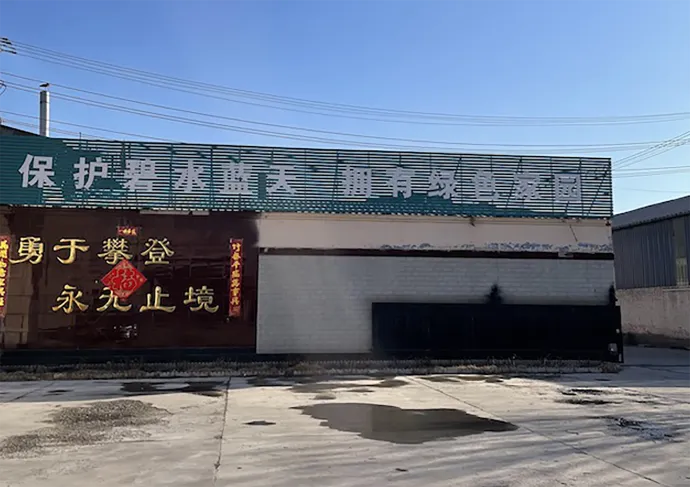- Afrikaans
- Albanian
- Amharic
- Arabic
- Armenian
- Azerbaijani
- Basque
- Belarusian
- Bengali
- Bosnian
- Bulgarian
- Catalan
- Cebuano
- Corsican
- Croatian
- Czech
- Danish
- Dutch
- English
- Esperanto
- Estonian
- French
- German
- Greek
- Hindi
- Indonesian
- irish
- Italian
- Japanese
- Korean
- Lao
- Malay
- Myanmar
- Norwegian
- Norwegian
- Polish
- Portuguese
- Romanian
- Russian
- Serbian
- Spanish
- Swedish
- Thai
- Turkish
- Ukrainian
- Uzbek
- Vietnamese
Pro . 10, 2024 06:06 Back to list
mineral fiber board
The Versatility and Benefits of Mineral Fiber Board
Mineral fiber board, also known as mineral wool board or rock wool board, is a construction material made from natural or synthetic mineral fibers. It is widely recognized for its impressive fire resistance, thermal insulation, and acoustic properties. This article explores the various applications, advantages, and environmental implications of mineral fiber board, highlighting why it continues to be a popular choice in the construction and manufacturing industries.
Composition and Manufacturing Process
Mineral fiber boards are primarily composed of inorganic materials, such as basalt rock, diabase, or recycled glass, which are melted and spun into fibers. These fibers are then bonded together using a binder, typically a thermosetting resin, to form boards of varying thicknesses and densities. The production process can also involve the addition of additives to enhance specific properties such as moisture resistance or fungal growth prevention.
Key Properties and Advantages
1. Fire Resistance One of the most significant advantages of mineral fiber board is its excellent fire resistance. Being made from inorganic materials, these boards can withstand high temperatures without emitting toxic fumes. This makes them an ideal choice for fire-rated walls, ceilings, and floors in any building.
2. Thermal Insulation Mineral fiber boards have low thermal conductivity, which helps regulate indoor temperatures and reduce energy costs. By providing effective thermal insulation, they contribute to the overall energy efficiency of buildings, leading to reduced reliance on heating and cooling systems.
3. Acoustic Performance Another notable property of mineral fiber boards is their sound absorption capabilities. The porous structure of the material allows it to dampen sound, making it suitable for use in noise-sensitive environments such as schools, offices, and residential buildings. This quality not only enhances comfort but also improves productivity in workspaces.
4. Moisture Resistance While mineral fiber boards are inherently resistant to moisture, they can be further treated to enhance this property. This quality helps prevent mold and mildew growth, making them suitable for use in humid environments such as kitchens or bathrooms.
mineral fiber board

5. Sustainability Many manufacturers of mineral fiber boards place a strong emphasis on environmental responsibility. The use of recycled materials in their production process, alongside the boards’ durability and energy-saving properties, makes them an eco-friendly choice for modern construction projects.
Applications
Mineral fiber boards are versatile and can be used in a variety of applications
- Commercial Buildings They are commonly used in office buildings for ceilings, partitions, and as wall cladding due to their acoustic and thermal insulating properties. - Industrial Facilities The fire-resistant nature makes these boards suitable for industrial settings where high temperatures and fire hazards are a concern. They are often used in the construction of warehouses and manufacturing plants.
- Residential Construction Homebuilders utilize mineral fiber boards for insulation and soundproofing, particularly in multi-family dwellings to ensure privacy between units.
- HVAC Systems Due to their thermal insulation properties, mineral fiber boards are used in HVAC duct systems to improve energy efficiency and reduce noise pollution.
Conclusion
Mineral fiber boards offer an impressive array of benefits that make them a valuable resource in modern construction. Their fire resistance, thermal insulation, and acoustic properties make them suitable for various applications, from commercial buildings to residential homes. As sustainability becomes an increasingly important factor in construction, the use of mineral fiber boards made from recycled materials represents a significant step forward. With continued advancements in technology and manufacturing processes, mineral fiber boards will likely play an essential role in constructing safer, more efficient, and environmentally friendly buildings for generations to come.
-
Transform Interiors with PVC Gypsum Ceiling: A Stylish, Durable, and Moisture-Resistant SolutionNewsMay.19,2025
-
The Smart Interior Upgrade: Discover the Durability and Versatility of Gypsum Ceiling Access Panel SolutionsNewsMay.19,2025
-
The Smart Choice for Interior Design: Discover the Value of PVC Gypsum Ceiling SolutionsNewsMay.19,2025
-
Mineral Fiber Ceiling Tiles: The Smart Blend of Performance and AestheticsNewsMay.19,2025
-
Mineral Fiber Ceiling Tiles: The Superior Choice Over Gypsum for Sound and Fire SafetyNewsMay.19,2025
-
Mineral Fiber Ceiling Tiles: Eco-Friendly Strength and Style for Every CeilingNewsMay.19,2025







